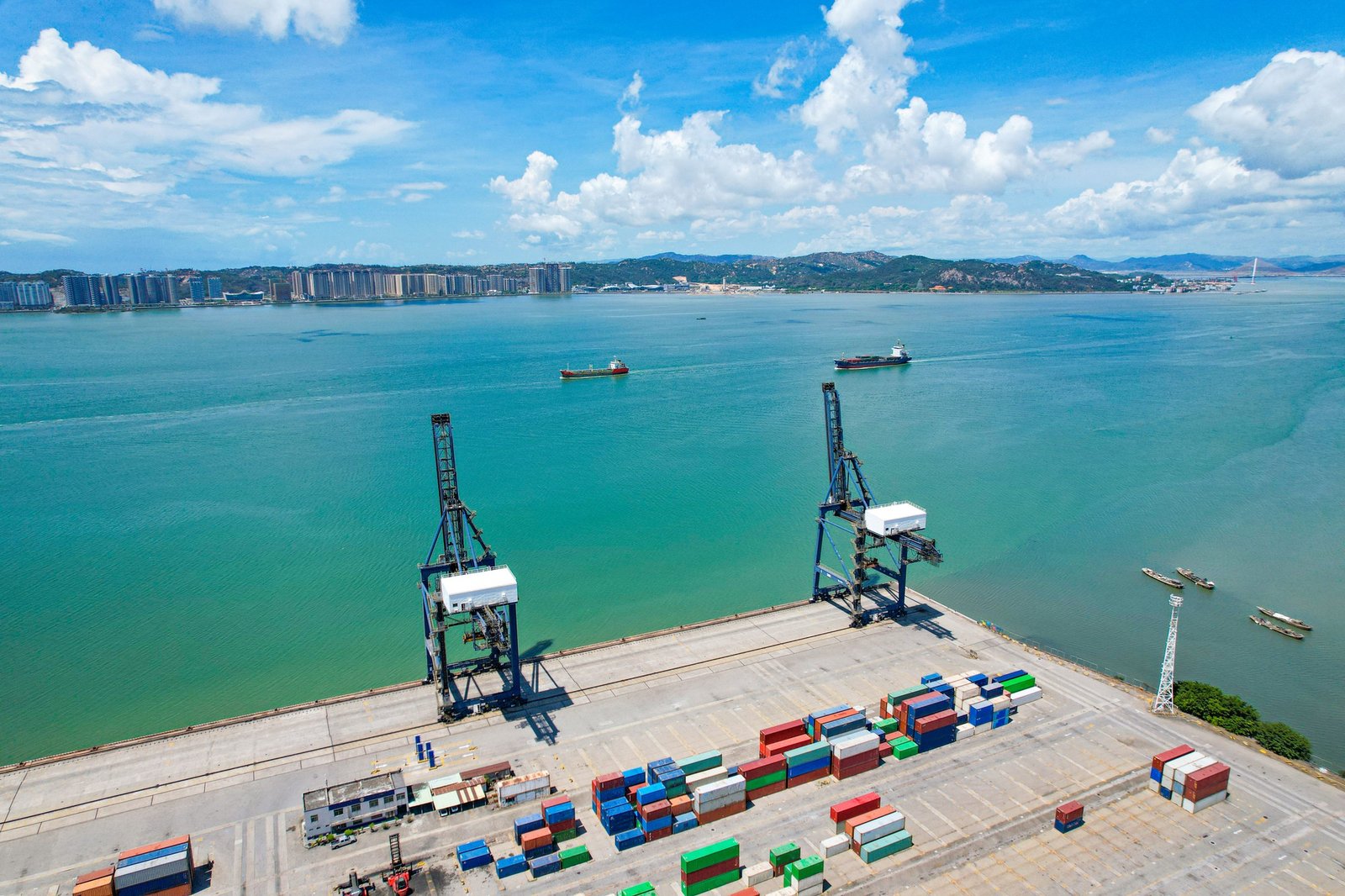International trade is integral to Australia’s economy and especially to the shipping and logistics industry. Australia enjoys the benefits of numerous free trade agreements with other countries whilst importing and exporting several goods ranging from machinery and minerals to meat and aluminium. In this article, we’ll explore Australia’s top imports and exports, especially looking at some of the industries that make up Australia’s international trade as well as who are the most important partners and players.
Australia’s Top Ten Imports
Australia is an export nation, generating yearly exports of around $195 billion and importing around $187 billion per year. The country has achieved a positive trade balance of around $8 billion, yet we also rely heavily on imports.

Below we’ve put together a list of imports during 2018 ranked one to ten based on dollar value. We have also provided the percentage amount to demonstrate how much the commodity and/or product represents that of Australian imports.
#1 Machinery (AUD$46.2 billion)
Representing about 14% of Australian imports, machinery formed Australia’s largest import in 2018. The level of machinery imports has consistently been high, also representing $47.2 billion worth of Australia’s imports in 2016.
This is not surprising given the investment in infrastructure and construction around Australia. Australians import everything ranging from computers and generators to centrifugal pumps, which are essentially ‘capital’ goods that help Australians make other goods.
#2 Mineral fuels (AUD$43.9 billion)
Mineral fuels represent around 13.3% of Australian imports, and this rapidly grew by around 33% from 2017 to 2018. Australia imports mainly all of its oil and is on the path to becoming 100% reliant on imports for petroleum in 2030.
Just over half of Australia’s imported refined petrol is imported from refineries in Singapore, followed by refineries in South Korea and Japan.
#3 Vehicles (AUD$43.6 billion)
Vehicles account for over 13% of Australia’s imports. In 2018, this included the importation of cars, trucks, automobile parts, tractors, trailers and more. Cars alone accounted for $24.3 billion in imports.
The importation of specialised vehicles grew significantly. Imports of special purpose vehicles grew by up to 97% from 2017, whilst the imports of armoured vehicles and tanks escalated by over 16%.
#4 Electrical machinery and equipment (AUD$37.1 billion)
Australians love using electrical equipment – so it contributed around 11.3% of Australia’s imports in 2018.
By far, the number one electrical piece of equipment forming the bulk of Australian imports were mobile phones, including smartphones. This alone accounted for about AUD$12.3 billion in Australian imports. The import of solar power products also increased significantly by 62% compared to 2017, as did electric generating sets and converters, increasing by just over 52%.
#5 Medical/technical equipment (AUD$12 billion)
Optical, technical and medical equipment account for around 3.7% of Australian imports. This includes goods like electro-medical equipment such as x-rays and blood fractions.
#6 Pharmaceuticals (AUD$11.8 billion)
Pharmaceuticals account for about 3.6% of Australian imports. The importation of items such as medicines and medical devices is heavily regulated, and many pharmaceuticals are prohibited from entering into Australian borders by the Department of Health and the Australian Border Force.
Recently, the import of medical cannabis has become a topic of much discussion. In 2019, the Department of Health permitted the bulk import of medicinal cannabis by licenced manufacturers approved by the Therapeutic Goods Association (TGA). There is also a range of regulations that detail when consumers can import cannabis that you can find on the TGA’s website.
#7 Gems and precious metals (AUD$9.5 billion)
Representing around 2.9% of Australian imports, gems and precious stones are at #7 on the list. Australians love their jewellery and this plays a critically important role in international trade. Diamonds alone generated about AUD$624 million in value whilst jewellery altogether formed about AUD$1.4 billion in import value.
Of particular note in the 21st century is the importation of ‘conflict diamonds’, which are diamonds generally sold by rebel movements in foreign countries to finance armed conflict against established governments. Australian governments continue to crack down on this illicit trade whilst supporting genuine diamond imports.
#8 Plastics and plastic articles ($AUD9.2 billion)
Plastic is a large international business, and it accounted for about 2.8% of Australian imports in 2018.
The imports of plastic tableware and toiletry alone rose by 5.7% in 2018 to about $706 million in value. Plastic plates, sheets and tape also rose to account for about $1 billion in import value.
#9 Iron or steel articles (AUD$7.2 billion)
Coming in at number nine are iron and steel articles, accounting for around 2.2 per cent of Australian imports in 2018. This was a significant increase from the previous year.
In 2016, the Federal Government placed import duties on Chinese steel in an attempt to assist local Australian steel producers, following recommendations from the Anti-Dumping Commission.
However, such tariffs may soon be found unlawful by the World Trade Organisation, who in December 2019 found that Australia’s anti-dumping import duties on paper were in breach of WTO rules. Trade lawyer Russell Wisese commented that “It is unthinkable that China won’t use the decision to get an outcome from Australia on steel and aluminium.”
#10 Furniture, bedding and lighting (AUD$6.9 billion)
Last but not least, Australians continue to invest in home furnishings, explaining why the importation of furniture, bedding and lighting accounted for 2.1% of all imports. As the housing market is slowly recovering with the reduction in interest rates, we anticipate this sector will continue to grow.

